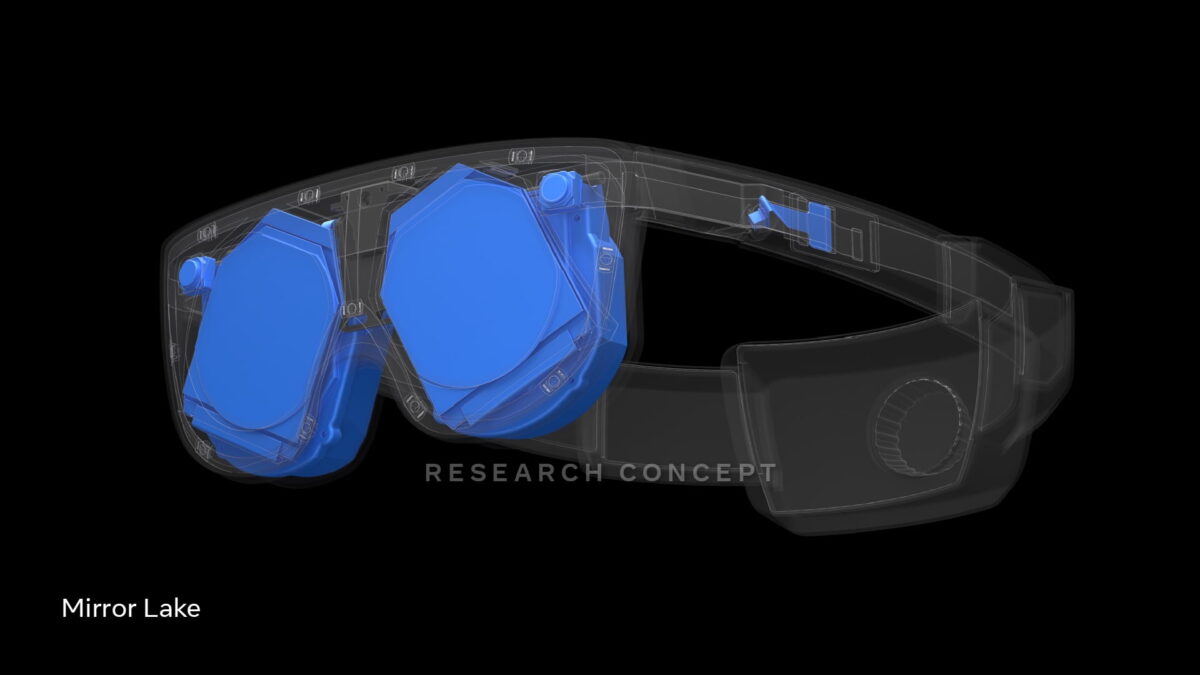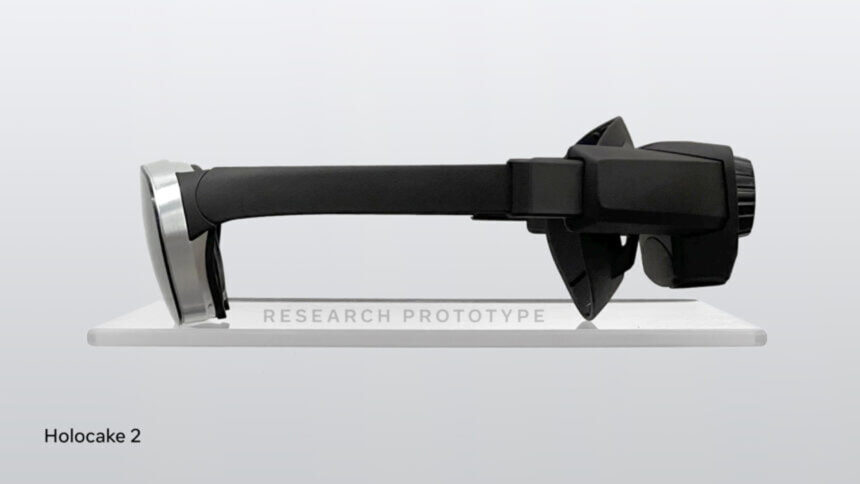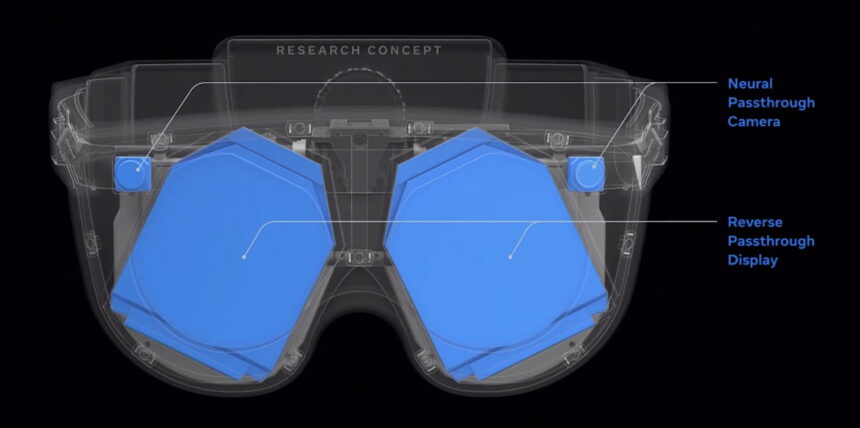Mirror Lake: This next-gen VR headset is Meta's big goal

Mirror Lake is the culmination of many VR technologies Meta has been working on for seven years. The powerful VR headset is expected to fulfill all virtual reality dreams one day.
Last week, Meta unveiled several VR prototypes demonstrating new and purpose-built display systems for virtual reality. They show the direction in which VR headsets could develop in the next five to ten years.
Meta's self-declared goal is to pass the visual Turing test. That is: to achieve a visual quality that makes digital worlds indistinguishable from reality.
The prototypes presented are building blocks on this path: Meta is exploring variable focus with Half-Dome, retina resolution with Butterscotch, HDR capability with Starburst, and holographic optics with Holocake 2, which is intended to make VR headsets very thin and light. The prototypes are all functional, even if their display technology is at different stages of feasibility and commercialization.
Also unveiled was Mirror Lake, the blueprint for a VR headset of which there is not yet a running prototype. Mirror Lake is Meta's big goal for VR: The futuristic VR headset will combine most of the showcased display systems as well as other technologies Meta has developed over the last seven years in a slim, lightweight and energy-efficient device.
Let's take a closer look at Meta's ambitious headset concept.
Content
Variable focus and lens attachments
Mirror Lake builds on Holocake 2's display architecture: a holographic optic that emulates a pancake lens. The result is a thin profile with a ski goggle-like form factor.

Holocake 2 is Meta's thinnest and lightest headset prototype to date. Its display is to become the basis of Mirror Lake. | Image: Meta
Another advantage of this display system is that it is flat. This allows it to be combined with many other technologies and optical elements, such as the liquid crystal lenses of a Half-Dome 3. Those also allow for variable focus or thin lens attachments with corrective lenses, so you don't need extra glasses when you put the headset on.
The first half of the following video shows this sandwich principle.
New systems for eye-tracking and passthrough
But that's far from all. According to Meta, the Holocake optics can embed holographic foils that direct light from the eyes to a pair of cameras on the side, enabling so-called multi-view eye tracking. The improved eye tracking can also improve the accuracy of variable focus, distortion correction and pass-through mode.

The front of Mirror Lake. The outermost layer is formed by two 3D displays that show the VR user's face. | Image: Meta
Speaking of passthrough, Mirror Lake is Meta's first headset to fully embrace mixed reality. It uses a new type of passthrough based on machine learning to solve one of the most difficult problems of passthrough technology: that the cameras don't match the position of the eyes. Meta will showcase what it calls Neural Passthrough at the Siggraph conference in August.
A VR headset with Passthrough
Meta also plans to integrate two flat 3D displays on the outside of the case, with the goal of displaying the VR user's eyes and face, making them visible to others. Meta calls this "reverse passthrough." Meta already presented corresponding research in the summer of 2021.

This older reverse passthrough prototype still looks a bit… interesting. In Mirror Lake, the technology is supposed to be packed tightly into the casing. Image: FRL Research
The biggest obstacle to realizing this concept is the light source: both Holocake 2 and Mirror Lake rely on laser light instead of LEDs for backlighting. The problem is that suitable lasers are not nearly good enough or mass producible.
"We’ll need to do a lot of engineering to achieve a consumer viable laser that meets our specs — that’s safe, low-cost, and efficient and that can fit in a slim VR headset. As of today, the jury is still out on finding a suitable laser source," said chief researcher Abrash at Mirror Lake's presentation.
Whether this can succeed is not certain. The head of display research, Douglas Lanman, believes that the Mirror Lake concept could still fail because of this. In that case, Meta would pursue a different technological route. In any case, the team has no doubts about the long-term feasibility of the VR vision.
Note: Links to online stores in articles can be so-called affiliate links. If you buy through this link, MIXED receives a commission from the provider. For you the price does not change.